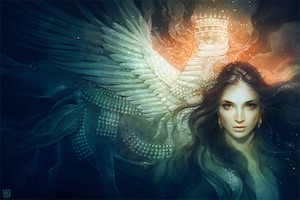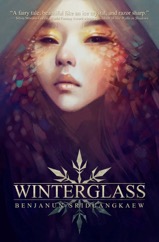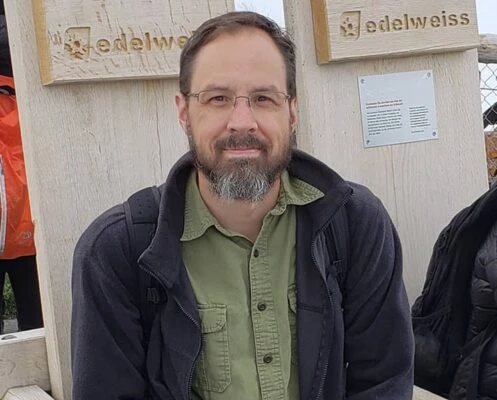
This month’s cover artist is Anna Dittmann, an illustrator from San Francisco with a passion for portraiture, tea, and ice cream. Now living in Scotland as a freelance artist, Dittmann’s figure-based work leans towards the surreal by drawing inspiration from abstracted natural elements.
APEX MAGAZINE: Your cover for this month’s issue feels dynamic, as if we are in the middle of an exciting event, yet the character seems melancholic. By pushing a contrasting narrative between the character and the dynamic textures, what interpretations are you hoping to hear from viewers? How might those interpretations affect your future painting methods or effects?
ANNA DITTMANN: I like playing with contrasts, particularly between expression and motif. While often focusing on serenity in portraiture, surrounding movement gives animation to a static figure. Chaotic themes are frequently drawn from nature, and a passive expression echoes a lack of control over these elements. I generally don’t add much verbal description, and I hope the ambiguity allows the viewer to create their own narrative. Hearing multiple interpretations of a piece enriches my painting process.
AM: Recently, another one of your pieces graced an Apex book, Winterglass by Benjanun Sriduangkaew. The textures around the character’s face add a magical, yet grounded, sense to the near-serenity of the character. When you are using textures and effects, do those effects evolve as you work or do you have a sense of what you would like to do going in?
AD: I find that textures help evoke a sense of mystery and spontaneity. I love incorporating them throughout the process—it gives an otherwise-structured portrait a sense of improvisation. Sometimes I turn to textures just because I’ve grown tired with a piece and want to breathe new life into it. They can completely change the mood and revitalize a painting.
AM: For your piece “Camouflage,” the texture that you used is far sharper than Winterglass and gives a more specific, naturalistic feel to the art. How does that effect change the message you are trying to portray, versus the sharper effect of the Winterglass cover? How difficult is it to balance a character’s perceived emotion with the textures around them?
AD: My use of texture has evolved over the years. While painting the more recent “Camouflage,” I became much more experimental with texture. Nowadays, depending on the style and narrative of the piece, my use of texture can be either dynamic or understated. Some characters call for an atmospheric approach, whereas others are grounded more closely in reality.
AM: The FAQ page of your website lists “Do some of the illustrations fail” as one of the questions, and your answer highlights the process of learning. Do life lessons away from the drawing board also affect your works? Have there been times where a success or failure in your life informed what you were painting?
AD: When painting personal pieces, I often find my experiences unintentionally projected onto the canvas. This is true for not just with feelings of success or failure, but any range of emotion. Depending on my mood, I use more vibrant colors or lean towards more pensive imagery. Sometimes, I don’t even realize the connection until it’s pointed out to me. I think this is relatable to anyone creating any type of art.
AM: Your second cover for The Forgotten Tale of Larsa prominently features ancient Assyrian art, based on the setting of the story. When it comes to a commissioned illustration, how much research do you do, versus basing it solely on the story? Does the story take precedence over actual history, vice versa, or somewhere in between?
AD: When painting artwork tied to history or real people, I make sure to do some review and research. If the piece is requested by a client, I will often be given a brief and reference imagery in advance. Whether or not the piece is of historical origin, I typically create mood-boards to constantly refer to and draw inspiration from. I tend to do my own research as well, when compiling descriptions and images, though do still take creative liberties. As my work isn’t normally focused around educational or scientific markets, I’m allowed some room for interpretation, to balance my voice with the requested subject matter.
AM: Thank you to Anna Dittmann, for a look behind the artist’s curtain. Be sure to visit her website at annadittmann.com to see more of her art, and find her on social media on instagram.com/annadittart and facebook.com/annadittart.












